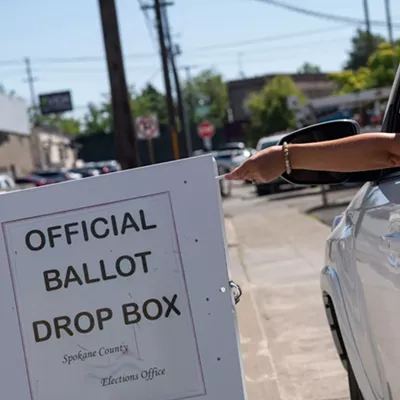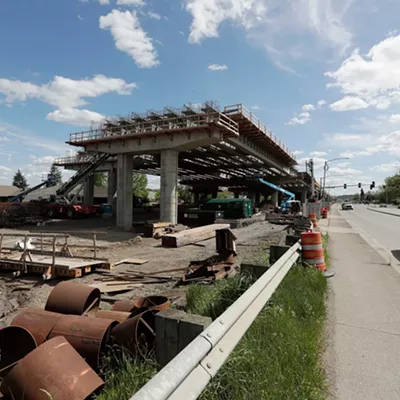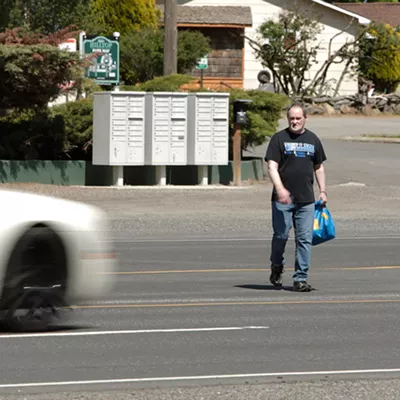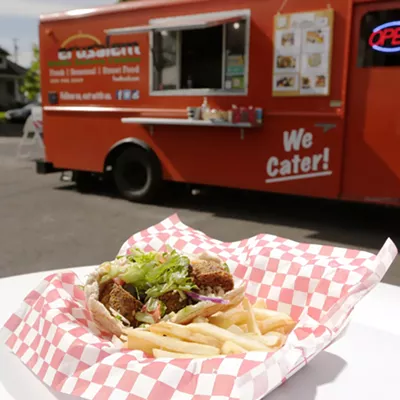Spokane County's homeless population has decreased since last year, according to the 2024 Point-in-Time Count, an annual count of homeless people that happens every January. The federally mandated survey — while imprecise — can provide insight into how Spokane's homelessness crisis is or isn't changing. This year's count found 2,021 people experiencing homelessness in Spokane County — a 15% decrease compared with last year's tally. That's the first year-to-year decrease since 2016. Of those surveyed, 1,578 were in shelters or transitional housing programs, and 443 were living on the street or in cars. That represents a 54% decrease in people who were unsheltered, and a 10% increase in those who were sheltered. The closure of Camp Hope last June may have artificially contributed to the decrease. When the camp was open, it was easier for volunteers to find and count unsheltered people. Half of those surveyed this year self-reported having a mental illness, and 38% self-reported a substance use disorder. The survey also found that Black and Indigenous people continue to be overrepresented in the county's homeless population. Lack of affordable housing was the top reason people cited for being homeless. (NATE SANFORD)
FEDERAL SPENDING SPREE
Spokane has $4.9 million in federal pandemic money that needs to be spent ASAP. With a few caveats, the money can be spent on anything loosely connected to helping the community recover from the pandemic or its economic implications. After months of debate, Spokane City Council members finally reached a compromise on Monday on how to spend the remaining federal money. The biggest item on the list is $1.8 million for "property acquisition" to reduce the impact of homelessness downtown and/or fund a new shelter model outside of downtown. Mayor Lisa Brown originally proposed putting almost all of the federal funds toward homelessness downtown, but some council members disagreed. The list approved on Monday also puts about $550,000 into municipal court services and $503,000 into a "clean and safe" litter cleanup program. The rest of the funds are split between child care center projects; youth sports; refuse receptacles for East Sprague; residential street lighting; alley activation; a downtown housing study; workspace improvements for the Police Ombudsman's office; a vehicle to be used for behavioral health services; a marketing campaign to sign people up for the working families tax credit; a school-based health center; equipment and facility improvements at the downtown fire station; and Cannon Hill Pond improvements. (NATE SANFORD)
COUNTY CONNECTIONS
Thanks to a broadband internet pilot program in Spokane County, more people within one of the county's "digital deserts" will have access to the web. With a $4.6 million grant from the Washington State Broadband Office, the Spokane Regional Broadband Development Authority, Broadlinc, has been able to bring near-term internet connectivity to at least 100 households in south Spokane County as long-term infrastructure like fiber optic connectivity continues to be built. To do this, Broadlinc is using new "Cellular on Wheels" technology, which is essentially a temporary broadband tower that can be collapsed small enough to fit into a standard pickup truck and taken where it's needed. It was demonstrated in Spangle last week. Additionally, the program brought this technology to first responder vehicles within Spokane County Fire District No. 3. "We now have the ability to receive emergency call information not available to our units before," SCFD3 Deputy Chief Dustin Flock said in a news release. "This is really going to be a game changer come fire season this summer." (COLTON RASANEN) ♦























